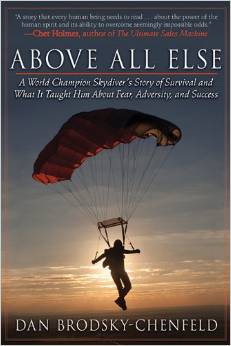The sixteenth chapter in Dan BC’s 4-way manual… different types of jumps

When you begin doing competition type jumps you should separate the jumps into different categories or types.
The categories include:
- 5 point randoms
- 1 block and 3 or 4 randoms
- 2 blocks and 2 randoms
- 2 blocks and 1 random
- 3 blocks
- Slot switchers (/mirror images)
Each of these types of jumps has a different feel, or rhythm to them. The rhythm is created by molding together the random pace (as determined in level three of the random training) with the more stop drill style builds we do at the top of the blocks and the short squeezes or pauses we do at the end.
In essence we “shift gears” when transitioning from a finished block into the random series, or from a random series into the first point of a block.

Random jumps
At one end of the spectrum we have 5-point randoms. These jumps have a nice steady pace as practiced in the random training.
All blocks
On the other end we have 3 block jumps. We build the top of each block more like a stop drill and we lock down the finish of the block to stop any momentum. It never develops a pace like an all-random jump. It feels more like one point at a time and less like a sequence because we have to give each point this extra attention.
On the jumps with both blocks and randoms we need to shift gears”

Combinations
On the jumps with both blocks and randoms we need to shift gears between these two. We execute a strong block and lock it down on the close. Then we key it and immediately shift gears into the random pace, whether for one random or four. Finish the random series and shift back to a stop-drill-style build at the top of the block.
Categorizing the jumps
It is extremely advantageous to recognize these unique qualities and emphasize them in your jump preparation. Soon all the jumps of a particular category will start to feel the same. You will be able to define exactly how every jump will feel as soon as you start the dive preparation. In competition you will receive the draw and will immediately be able to predict the flow of the jump based on its category.
You will be able to define exactly how every jump will feel”
When you first start doing full competition draws, separate the jump order out into the categories. Do the random-heavy jumps first, three block jumps last. By doing them in this order you begin the draw by reestablishing the random pace on the first jumps. It is then fresh in your head and easily applied to the other categories.
When reviewing the jumps after a draw you are likely to find that you are stronger in some categories than in others and can adjust your training jumps to build up your weaker areas. It is often beneficial to have a full day of the type of jumps that you need the most work on.
Slot switchers
Slot switchers (and mirror images) fall into the categories we have already established but add another element as well. These are only a small percentage of the jumps. Because we don’t do that many of them they often are our ”nemesis’ category. To get over that barrier, dedicate an entire day or two to doing nothing but these more complicated jumps. It may seem like you are torturing yourselves but at the end of the camp you will be much more experienced and confident with these jumps and will never fear them again. At that point you will be able to place them back with the other categories and disregard that it is a jump that you will also switch slots.
Mirror Images
Slot switching dives can also be puzzled as mirror image jumps (where you keep the same slot but alternate between left and right movement in the ‘switching’ block). Hardly any teams do mirror images any more. But I think the last teams to do Mirror Images were Synchronicity, Airkix and Storm. I coached them all. And, they all won World Meets 😉
Photos in this article show Perris Fury by Willy Boeykens
More Magic From Dan
Previous Article (15): Block Training
Next Article (17): Preparation and dirt diving
Above All Else

Several articles in this series are extracts from Dan’s amazing book, ‘Above All Else’, which covers far more than skydiving. It’s available from Square One HERE or Amazon HERE, where you can check the glowing reviews, mostly from non skydivers, such as:
“I can’t recommend the book more. Do yourself this favor and just read it. Sure, it’s not Shakespeare, but it’s truth. At 120 MPH. And you will be forever changed.”
Amazon review by Esta Desa



